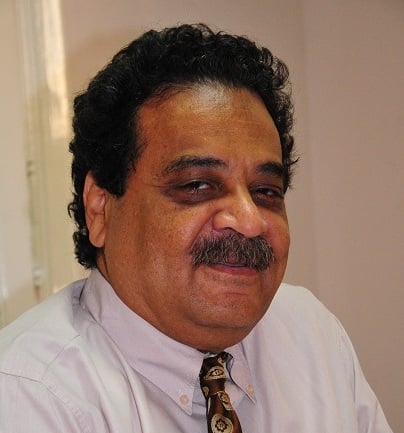The change in the 1952 family is associated with changing the president, and consequently, changing the ruling group and some fundamental general orientations. When changes associated with ministerial changes occurred under a post-1952 president, this was generally because the president decided to form a team that would allow him to impose the change he wants.
Such changes were decided upon by fate, or circumstances, or the will of the ruling class. For instance, this is what Sadat did when he chose Aziz Sedqy in the period between January 1972 and March 1973 to carry out economic mobilisation that allowed him to enter October war in 1973. After that, he chose Abdel Aziz Hegazy to implement the recommendations of the International Monetary Fund (IMF) for economic reform.
One can also see that the presidents of the 1952 family led the cabinet themselves at times of crises that required, according to their perception regarding successful management at times of crisis, increasing the concentration of power, not only in the hands of the small ruling GROUP, but in the hands of the executive power itself.
This is how Abdel Nasser took over as head of the cabinet three times. The first time was during Mohamed Naguib’s presidency, officially, before and during March Crisis in the period between 25 February 1954 and 8 March 1954. The second time lasted for four years, from April 1954 to October 1958, during which he placed the foundations of his rule, excluded his opponents, and closed off the political sphere, and even the public sphere completely. As for the third time, it was in July 1967, after the defeat, and it lasted until his death in September 1970.
Sadat also headed the cabinet twice. The first time was before and during the October war, in the period between March 1973 and September 1974. The second time was with the high political tension that occurred when the crisis between him and the social and political powers reached its peak in May 1980. This ministry lasted until he was assassinated on 6 October 1981.
Finally, Mubarak headed the cabinet just once at the beginning of his tenure, directly after Sadat’s assassination. This lasted from 6 October 1981 until 2 January 1982.
Among the important things to note is that most of the prime ministers and ministers of the 1952 family were not from among the president’s men or his group. This is probably linked to the question of the significance and necessity of ministerial changes during that era, which was characterised by several attributes, most notably that the public sphere, and not just the political field, was completely closed off.
Hence, there were no social tools, such as unions, or political tools, such as parties, to manage and absorb social or political conflicts – which could lead to new changes that are consistent with the evolution of these conflicts and balances created on the ground.
At this point, the change becomes more like a grant or donation requested by the people from the president, instead being a desired goal or result of social or political conflict. More importantly, the call for change in this case is not a call for changing the president himself, as the person behind the ministry, but rather calls for the president to make a change. The closure of the public and political spheres led to further tension, which increases over time.
Therefore, the president finds himself compelled to make a change that relieves the tension and renews hopes for his regime. The most accepted and usual procedure here is the dismissal of the secretarial staff, or a ministerial change.
It is as though the president offers a scapegoat or a sacrifice on the altar of popular desire for change, whereas he himself, a president who appointed the ministry, remains above the mistakes or crimes of this ministry. He may be even appear to be saddened and shocked because of its bad performance, its mistakes, or its obvious corruption.
The president remains as the one who feels the suffering of the people; the man who works by himself, sparing no effort to serve the people. He alludes to the need to ease the burden on citizens, improve services, or to achieve social justice.
The system, the president’s, keeps renewing its blood, and projects new hopes, under the slogan: “Let’s wait and see how the new ministry will do”, as if the new ministry will start a new era of new policies.
The ministerial change in the 1952 family is, then, closer to hiring a group that handles some administrative tasks, and is at the same time the front for all the criticism directed towards the system. Workers in the media and the public sphere, generally, know that the democratic margin permitted may allow for criticising this government or the secretariat, but it never allows for criticising the president. This role, as a front for criticism, sometimes extends for the cabinet to become a scapegoat and carry the accusations of corruption and negligence before the public eye.
Ministerial changes, and the role they played in the continuity of the 1952 family, may be, considering the difference of course, close to the role of a scullery boy working for a butcher. This faithful boy, who is the arms and legs of his master, is the one put forward by the master if there is a sudden inspection, and he is the one who goes to jail for his master, who promises to hire him a lawyer and provide for his family. But this leaves us to wonder about the nature and mechanisms of the relationship between the secretariat and the ruling junta!




